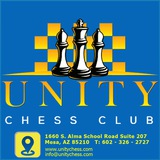📘 43...Rb6
But the continuation 43...Qe2 44.Q.d6 Rb1! could have finished the game much more nicely.
But the continuation 43...Qe2 44.Q.d6 Rb1! could have finished the game much more nicely.
22...Ka7
A good prophylactic move so in the case of moving the rook up, White wouldn't be able to do any check in the back rank.
A good prophylactic move so in the case of moving the rook up, White wouldn't be able to do any check in the back rank.
📘 26...Kg7?
The Slovakian IM missed a beautiful finale:
26...Rb8! and now either white takes the exchange by 27.Nd7 Kg7 28.N.b8 R.b8 or not he can not reasonably defend black's nate threat on b2. Defending b2 from the second rank will be refuted by a neat check on g5!
The Slovakian IM missed a beautiful finale:
26...Rb8! and now either white takes the exchange by 27.Nd7 Kg7 28.N.b8 R.b8 or not he can not reasonably defend black's nate threat on b2. Defending b2 from the second rank will be refuted by a neat check on g5!
📘 Mutual blunders!
33...Qb5?? (33...e4+ 34.Q.e4 Q.c3=) 34.Kd2?? (34.c4! Qb3+ 35.Ke2 Qb2+ 36.Rd2+-)
34...Q.f1-+
33...Qb5?? (33...e4+ 34.Q.e4 Q.c3=) 34.Kd2?? (34.c4! Qb3+ 35.Ke2 Qb2+ 36.Rd2+-)
34...Q.f1-+
📕 #55
1.Qf1!
Deep positional judgement by Karpov. He has correctly avoided the trade of queens. By Qf1 white can transfer his queen to the active c4 square; moreover, He can consider the possibility of Be2 with the idea of Bc4 to press on the f file.
1.Qf1!
Deep positional judgement by Karpov. He has correctly avoided the trade of queens. By Qf1 white can transfer his queen to the active c4 square; moreover, He can consider the possibility of Be2 with the idea of Bc4 to press on the f file.
📕 #56
White's bishop pair is going to be disappeared after black plays Bc5. White can not avoid this exchange by Qc4, since black replies with Qa6!.
19.Bg4! and now at a cost of a weakness on the knigside by 19...h5, white consents to transform his two bishops advantage into other positional advantages.
20. B.d7 Q.d7
Now white has the upper hand, because he has a better pawn structure, a better bishop and more active pieces.
White's bishop pair is going to be disappeared after black plays Bc5. White can not avoid this exchange by Qc4, since black replies with Qa6!.
19.Bg4! and now at a cost of a weakness on the knigside by 19...h5, white consents to transform his two bishops advantage into other positional advantages.
20. B.d7 Q.d7
Now white has the upper hand, because he has a better pawn structure, a better bishop and more active pieces.
🔺 #27👇👇
1...Bf6!! 2.Rxa3 Bxd4 3.Nxe8 Bxc5!-+ 4.Rd6 Rxe8!-+ 0-1
1...Bf6!! 2.Rxa3 Bxd4 3.Nxe8 Bxc5!-+ 4.Rd6 Rxe8!-+ 0-1
📘 4...Ba6 5.b3 Bb7
Among the top players in world, Boris Spassky played this variation for the first time in 1985.
This line is also a favorite among chess legends such as Carlsen, Anand, Mamedyarov, Adams, Ivanchuk, Grischuk, and Karpov.
Among the top players in world, Boris Spassky played this variation for the first time in 1985.
This line is also a favorite among chess legends such as Carlsen, Anand, Mamedyarov, Adams, Ivanchuk, Grischuk, and Karpov.
📘 44.a6? (Ne1! +-)
White underestimate the power of Black's active queen and 2 knights.
44...Q.d3 45.a7 Nd4! (idea N.f4)= 46.a8=Q N.f4! 47.Qf1 Nde2+ 48.Kh2 Qg3+! 49.Kh1 Qe3 50.Kh2 Qg3!
Repetition and draw.
White underestimate the power of Black's active queen and 2 knights.
44...Q.d3 45.a7 Nd4! (idea N.f4)= 46.a8=Q N.f4! 47.Qf1 Nde2+ 48.Kh2 Qg3+! 49.Kh1 Qe3 50.Kh2 Qg3!
Repetition and draw.
